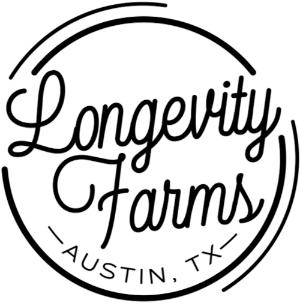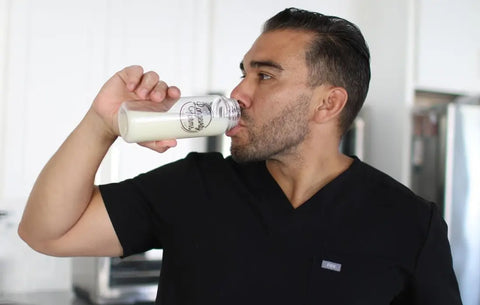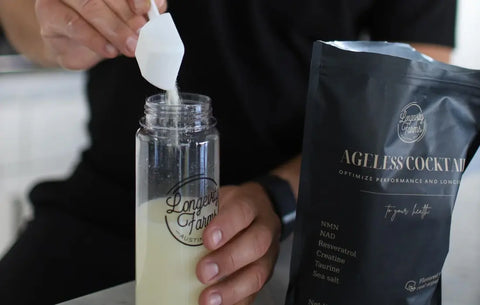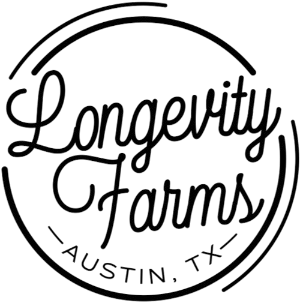The quest for longer, healthier life has increasingly turned toward the microscopic world within our cells. One promising focus is a vital molecule called NAD⁺ (nicotinamide adenine dinucleotide), which plays a central role in cellular metabolism and maintenance. Researchers have found that NAD⁺ levels tend to decline with age, potentially contributing to reduced energy production and diminished cellular repair capacity.
NAD⁺ – The Key to Cellular Energy and Repair
This is a coenzyme present in every cell and is indispensable for keeping those cells powered and functional. It acts much like a molecular battery: NAD⁺ accepts electrons during metabolic reactions to become NADH, and then NADH drives the production of ATP (the cell’s energy currency) by donating those electrons in mitochondria. The role of NAD in mitochondrial function is fundamental – NADH feeds electrons into the mitochondrial electron transport chain, enabling the efficient generation of energy. Beyond cellular energy production, NAD⁺ also serves as a critical substrate for numerous enzymes that repair damaged DNA, regulate gene expression, and coordinate the cellular response to stress. In other words, NAD⁺ fuels both the energy metabolism of the cell and its self-maintenance mechanisms.
Because so many essential processes depend on NAD⁺, a shortage of this molecule can leave cells with an “energy crisis” and impaired upkeep. When NAD⁺ levels drop, cells struggle to meet their energy needs and to carry out vital repairs. Conversely, maintaining ample NAD⁺ helps cells stay metabolically efficient and resilient. The central importance of NAD⁺ to cell function underpins its emerging reputation as a key to cellular longevity.

NAD and Aging: Why Levels Decline Over Time
The interplay between NAD and aging has become a key focus for biogerontologists, as NAD⁺ levels markedly decline with age, creating an energy deficit that hampers cells’ youthful function. Many age-related issues correlate with falling NAD⁺: older tissues often show signs of metabolic slowdown, increased oxidative stress, and accumulating DNA damage alongside lower NAD⁺ availability. Part of the reason is that the enzymes which produce NAD⁺ become less active with age, while certain NAD⁺-consuming enzymes become more active, collectively draining the cell’s NAD⁺ pool.
One significant consequence of NAD⁺ loss is that longevity proteins called sirtuins become less active – these NAD⁺-dependent enzymes normally promote DNA repair and metabolic balance. Still, they quiet down when NAD⁺ is scarce. Reduced sirtuin activity has been linked to disruptions in communication between cellular organelles. Meanwhile, low NAD⁺ also hinders PARP enzymes, which repair DNA damage, potentially allowing more cellular wear and tear to accumulate. In essence, an aging cell can get caught in a vicious cycle: lower NAD⁺ means less energy and repair capacity, which in turn leads to more cellular damage – further depleting NAD⁺. This evidence has led scientists to speculate that preventing or reversing NAD⁺ decline could help maintain cellular “youth.”
NAD Precursors: Rebuilding the NAD⁺ Pool
This is where NAD precursors come in. These are the building-block molecules that cells use to create NAD⁺. Some are familiar vitamins and nutrients: for example, niacin (nicotinic acid) and niacinamide (nicotinamide) are forms of vitamin B₃ that can be converted into NAD⁺ through metabolic pathways. In addition, two other compounds – nicotinamide riboside (NR) and nicotinamide mononucleotide (NMN) – have been identified as especially efficient NAD⁺ precursors. The body can synthesize NAD⁺ from these molecules via “salvage” pathways, effectively rebuilding its NAD⁺ supply. NAD⁺ itself is not easily absorbed or transported into cells, but these precursor forms are, which is why NAD precursor supplements have attracted so much attention.
Ingesting such precursors can increase NAD levels in the body. Intake of the amino acid tryptophan or various forms of vitamin B₃ (niacin, nicotinamide), as well as newer compounds like NR and NMN, has been shown to stimulate NAD⁺ production in cells. For example, our daily requirements for NAD⁺ can be met by vitamin B₃ in food. NR and NMN are also found in trace amounts in certain foods (such as milk and broccoli), although not at the levels provided by concentrated supplements. Because they directly bolster the cell’s NAD⁺ pool, these compounds essentially serve as NAD boosters in pill form.
Thanks to their efficacy, NAD precursors like NR and NMN are now marketed as supplements to support cellular health. The idea is that by replenishing our NAD⁺ levels, we can restore the cell’s energy balance and enhance its capacity for self-repair. While research is ongoing, NAD precursors represent a practical way to intervene in the NAD⁺ aging cycle – effectively “filling up the tank” so that cells have the necessary fuel to function optimally.
Biological Pathways of NAD+ Synthesis
The body relies on three main biological pathways to synthesize NAD+ from its dietary and endogenous precursors. Each route is distinct in its steps and the precursors it utilizes, reflecting the metabolic flexibility of our cells. The Preiss-Handler pathway primarily converts nicotinic acid (NA), also known as niacin, into NAD+. When niacin is ingested, it undergoes a series of three enzymatic reactions: first, it is transformed into nicotinic acid mononucleotide (NaMN), then into nicotinic acid adenine dinucleotide (NaAD), and finally into NAD+. This pathway is efficient and direct, making niacin a reliable NAD+ precursor, though the side effect of flushing can limit its use at high doses.
The Salvage pathway is the predominant route for recycling nicotinamide (NAM), a form of vitamin B3, back into NAD+. This two-step process begins with the conversion of nicotinamide into nicotinamide mononucleotide (NMN) by the enzyme NAMPT. NMN is then converted into NAD+ by NMNAT enzymes. Notably, nicotinamide riboside (NR), another NAD+ precursor, enters the salvage pathway by first transforming into NMN. This pathway is critical because NAD+ is continuously consumed by enzymes like sirtuins and PARPs, and the salvage pathway efficiently recycles the resulting nicotinamide, maintaining cellular NAD+ levels. The De Novo pathway begins with the essential amino acid tryptophan, which undergoes a complex, multistep transformation before being converted into NAD+. While this pathway can contribute to NAD+ synthesis, it is less efficient, as tryptophan is also needed for protein synthesis and neurotransmitter production, leaving only a small fraction available for NAD+ generation.
Comparative Effectiveness of NAD+ Precursors
Not all NAD⁺ precursors are created equal. Each one differs in how efficiently it is converted into NAD⁺ and in its potential impacts on health. The five primary precursors—tryptophan, niacin (nicotinic acid), nicotinamide, nicotinamide riboside (NR), and nicotinamide mononucleotide (NMN)—enter the NAD⁺ biosynthesis network through different metabolic routes, resulting in notable differences in their effectiveness.
Tryptophan, an essential amino acid found in protein-rich foods, follows the most complex and least efficient pathway. It must undergo at least seven to nine enzymatic steps before becoming NAD⁺. Because tryptophan is also needed for protein synthesis and the production of serotonin and melatonin, only a small fraction is available for NAD⁺ generation. As a result, tryptophan is considered the least efficient NAD⁺ precursor—estimates suggest it is up to 60 times less effective than direct vitamin B₃ forms. Niacin (nicotinic acid) is a classic vitamin B₃ and follows the Preiss-Handler pathway, requiring three steps to become NAD⁺. While niacin is effective at raising NAD⁺ levels, its use at higher doses is limited by the common side effect of flushing—a temporary but uncomfortable reddening of the skin. Extended-release formulations can reduce flushing, but prolonged high-dose use raises concerns about liver toxicity. Despite these drawbacks, niacin remains a proven, if less convenient, NAD⁺ booster.
Nicotinamide (niacinamide) is another B₃ form and enters the salvage pathway, which involves just two steps to NAD⁺. It does not cause flushing, making it more tolerable than niacin. However, at higher doses, nicotinamide can inhibit sirtuins—NAD⁺-dependent enzymes that play important roles in cellular repair and longevity. This inhibition may blunt some of the healthy aging benefits associated with NAD⁺ elevation.
Nicotinamide riboside (NR) and nicotinamide mononucleotide (NMN) are considered the most efficient NAD⁺ precursors. NR is rapidly absorbed and converted to NMN, which is then just one step away from NAD⁺. Both NR and NMN bypass several rate-limiting steps in the salvage pathway, resulting in superior bioavailability and a more direct boost to cellular NAD⁺ levels. NR, in particular, has been shown to consistently and efficiently raise NAD⁺ in blood and tissues without significant side effects. NMN is also highly effective, although some evidence suggests its absorption may depend on conversion to NR before it enters cells. Importantly, both NR and NMN support sirtuin activation, which is linked to improved metabolic health, DNA repair, and stress resistance—key factors in healthy aging.

Ways to Naturally Boost NAD Levels
The body’s NAD⁺ metabolism is deeply intertwined with diet and exercise, which means healthy habits can go a long way toward preserving our cellular NAD⁺. Exercise is one of the most powerful natural NAD⁺ enhancers. Regular physical activity can significantly elevate NAD⁺ in tissues by upregulating the enzymes that synthesize NAD⁺, effectively counteracting the age-related NAD⁺ decline in muscles. Exercise “tells” our cells to make more NAD⁺ – partly by increasing levels of an enzyme called NAMPT that is crucial for NAD⁺ production.
Intermittent fasting and caloric restriction are another proven strategy to nudge NAD⁺ upward. When we undergo short-term fasting or consistently eat a bit less (caloric restriction), cells respond by activating stress-resistant pathways, including the NAD⁺ salvage pathway. Fasting triggers an energy sensor in cells (AMPK) that, among other things, leads to increased NAMPT activity – resulting in more NAD⁺ being made from available precursors. In simple terms, a hungry cell shifts into a preservation mode that includes recycling and boosting its NAD⁺ levels. This is one reason caloric restriction can extend lifespan in laboratory organisms: it maintains high NAD⁺ levels, which in turn activate sirtuins and other repair enzymes associated with longevity.
Other lifestyle factors can influence NAD⁺ as well. Maintaining a consistent sleep schedule and strong circadian rhythm may support NAD⁺, since NAD⁺ production follows a daily cycle tied to our internal clock. Conversely, chronic sleep disruption has been linked to declines in NAD⁺ and sirtuin activity, which could accelerate aging processes. There’s also emerging evidence that heat therapy might transiently boost NAD⁺ levels by inducing mild oxidative stress that the body compensates for by making more NAD⁺. A balanced diet helps too: foods rich in NAD⁺ precursors – for instance, tryptophan or niacin provide the raw materials for NAD⁺ production. While these natural approaches may not raise NAD⁺ as dramatically as a supplement pill can, they contribute significantly to maintaining NAD⁺ levels over the long term.
Nicotinamide Riboside Benefits for Cellular Health
Among the various NAD⁺ boosters, nicotinamide riboside benefits have garnered particular attention. Nicotinamide riboside (NR) is a specialized form of vitamin B₃ that serves as an excellent NAD⁺ precursor. When you take NR, your body efficiently converts it into NMN and then into NAD⁺ inside cells. NR is known for being especially bioavailable, as it efficiently and consistently raises NAD⁺ levels in the blood and is more readily utilized by the body than other NAD⁺ precursors.
- Energy Metabolism: By boosting NAD⁺, NR can enhance the function of mitochondria (the cell’s energy factories). NR supplementation improves mitochondrial activity in muscles and may increase endurance. In humans, NR has been observed to increase NAD⁺ levels in skeletal muscle, which may support improved energy utilization and exercise capacity.
- Sirtuin Activation: NAD⁺ is required for sirtuin enzymes, and NR’s ability to elevate NAD⁺ effectively “turns up” sirtuin activity. Sirtuins are associated with enhanced metabolic regulation and stress resistance. Through sirtuin activation, NR may aid in repairing DNA, reducing inflammation, and protecting tissues from the effects of aging. These effects mirror those observed with caloric restriction or exercise, suggesting that NR captures some of the same longevity pathways.
- Neuroprotection: There is excitement around NR’s potential to support brain health. NAD⁺ plays a key role in helping neurons cope with stress. In models of neurodegenerative disease, NR has shown promise by preserving neuronal NAD⁺ and protecting against cognitive decline.
- Cardiovascular Health: Initial human trials have hinted that NR supplementation can improve aspects of cardiovascular function. For example, one study found that 6 weeks of NR supplementation in middle-aged adults led to reduced blood pressure and aortic stiffness, changes that would be expected to lower cardiovascular risk. These results, while preliminary, align with the notion that NAD⁺ helps maintain vascular tissue youthful and flexible.
Considering these diverse benefits, NR has quickly become one of the most popular and promising NAD⁺ boosters. Many experts regard it as arguably the best NAD supplement currently available due to its high efficacy in raising NAD⁺ and its growing track record of safety.
Human Studies and Clinical Research
A growing body of human studies and clinical trials has begun to shed light on the effects of NAD+ precursors on health, aging, and related outcomes. Most research to date has focused on measuring changes in NAD+ levels in blood or tissues, as well as assessing functional outcomes like physical performance, sleep quality, insulin sensitivity, inflammation, and markers of cardiovascular or neurological health.
One of the most consistent findings across multiple trials is that supplementation with NR or NMN can significantly increase NAD+ concentrations in the blood of middle-aged and older adults. For example, clinical studies have shown that daily doses of NR (ranging from 250 mg to 2000 mg) reliably elevate NAD+ levels in whole blood and white blood cells. However, the magnitude of increase can vary between individuals. NMN supplementation has also been shown to raise blood NAD+ levels, with doses as low as 125 mg nearly doubling NAD+ after four weeks in some studies. However, the ability of these precursors to increase NAD+ in specific tissues, such as muscle, appears less robust.
Beyond NAD+ levels, human studies have investigated the functional impacts of NAD+ precursor supplementation. Several randomized controlled trials have found that NR and NMN may improve certain aspects of physical performance, particularly in older adults. NMN has been linked to enhancements in grip strength, walking speed, and overall muscle function, as well as improved sleep quality. Some studies in postmenopausal women and individuals with prediabetes or obesity suggest that NMN may also boost insulin sensitivity and improve glucose metabolism. NR, on the other hand, has shown potential benefits for cardiovascular health, including reductions in blood pressure and arterial stiffness, and may reduce inflammatory markers in adults with non-alcoholic fatty liver disease.
Choosing the Best NAD⁺ Supplement
With the growing market of NAD⁺ boosters, how do you identify the most effective product? The best supplements to support cellular health will depend on factors like the form of precursor used, the dosage, and the product’s quality. Here are a few considerations:
- Choose Proven Precursors: Look for supplements containing NR or NMN, which have the strongest evidence for boosting NAD⁺. Niacin (nicotinic acid) and nicotinamide are also NAD precursors, but they may be less targeted – and high-dose niacin can cause flushing, while nicotinamide at high doses might inhibit specific longevity pathways. NR in particular has extensive research behind it, so a high-quality NR-based product is often a top choice.
- Purity and Formulation: The best nicotinamide riboside supplement will use a high-purity form of NR and be manufactured with rigorous quality control. Trustworthy brands will provide a Certificate of Analysis or third-party testing to verify that the capsule contains what it should and is free of contaminants. It’s wise to be cautious of unusually cheap “NAD pills” – if a price seems too good to be true, the product might not have effective levels of the active ingredient.
- Dosage and Bioavailability: Verify the dosage per serving against the dosage used in research studies. Ensure the healthy aging supplements provide a significant dose of the NAD precursor. Additionally, some products include synergists like pterostilbene (a relative of resveratrol) or TMG (trimethylglycine) to support methylation alongside NAD⁺ boosting – these can be beneficial additions, but the core is the NAD precursor itself.
- Brand Reputation: Buy from a reputable company that specializes in science-backed supplements. Established brands tend to invest in higher-quality ingredients and thorough research. As an example, Longevity Farms offers NAD supplement drinks that emphasize quality, potency, and scientific validation. Such companies focus on proven ingredients and formulate their products based on up-to-date research, without the hype of unproven “miracle” additives.
In weighing your options, remember that an NAD supplement for longevity is meant to support your overall healthspan strategy. It works best in concert with healthy habits. The best nicotinamide riboside supplement or NAD booster will simply and transparently provide a robust dose of a true NAD precursor, allowing you to top up your cellular NAD reliably.

NAD⁺ has emerged as a pivotal factor in the biology of aging – a common denominator linking metabolism, DNA repair, and longevity. The decline of NAD⁺ with age offers both a challenge and an opportunity: by finding ways to restore NAD⁺, we may help cells regain some youthful functionality. NAD for longevity supplements, such as NR and NMN, along with NAD-friendly lifestyle practices (exercise, fasting, and a nutrient-rich diet), form a toolkit for supporting our cellular “battery” as we age. While research is ongoing, the evidence so far provides compelling proof of concept that boosting NAD⁺ can promote healthy aging at the cellular level. In the coming years, we will likely learn even more about how to buy NAD cocktails. Focusing on NAD⁺ maintenance is a promising strategy for anyone striving to age gracefully, energetically, and with their cells in a state of youthful vigor.
Sources:
- Poljsak, B. et al. “Healthy Lifestyle Recommendations: Do the Beneficial Effects Originate from NAD⁺ Amount at the Cellular Level?” Oxidative Medicine and Cellular Longevity, 2020. (PMC Article ID: PMC7752291) pmc.ncbi.nlm.nih.gov
- Life Extension Magazine. “NAD⁺: Nicotinamide Riboside Benefits”. July 2021. (LifeExtension.com)
- Sauder, C. “Exploring the Role of NAD⁺ in Aging and Longevity.” Vail Health News, Feb 19, 2024. (vailhealth.org)
- Raman, R. “All About Nicotinamide Riboside.” Healthline, Jul 11, 2025. (Healthline.com)healthline.com




